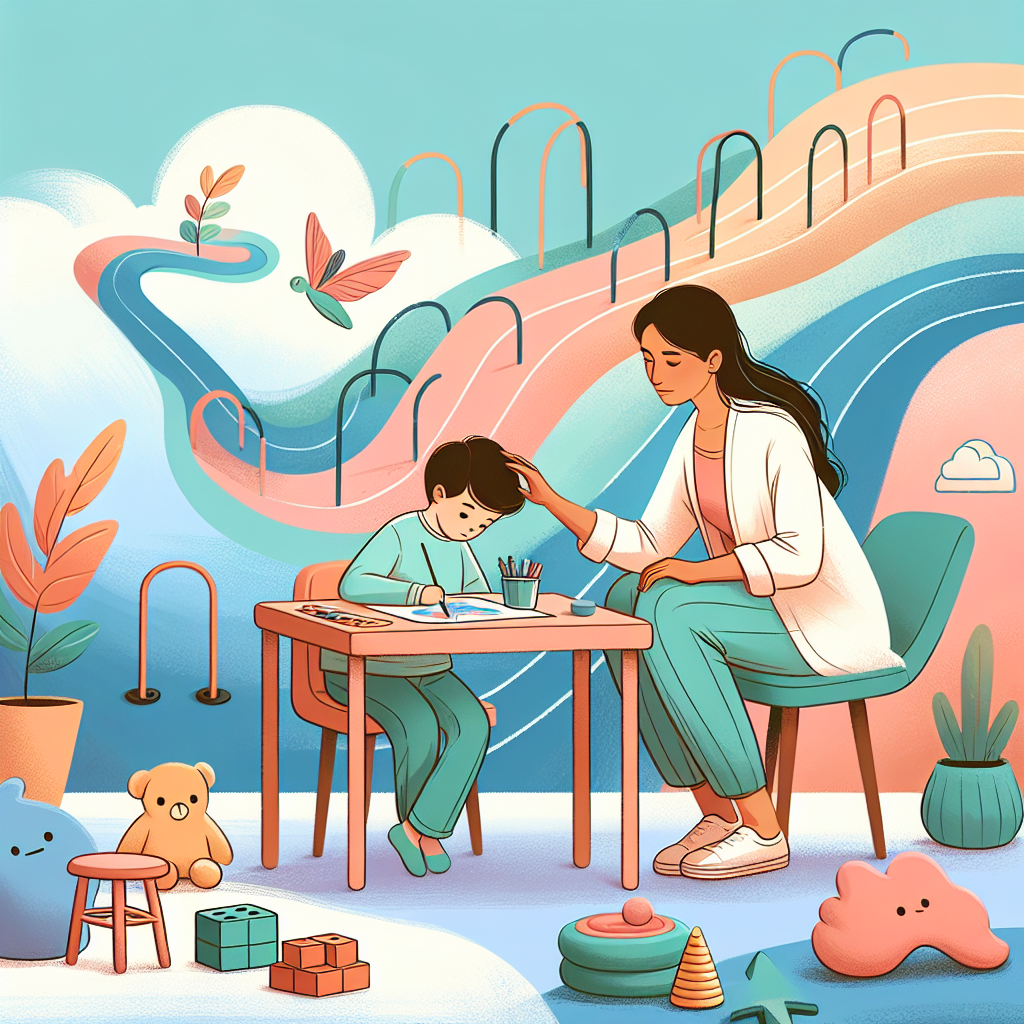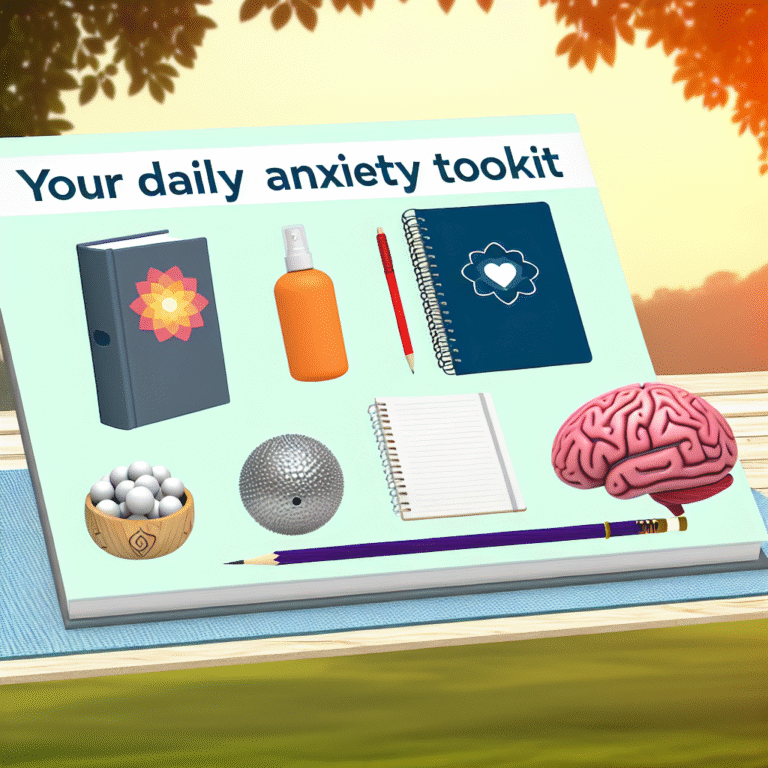
Introduction
In today’s increasingly complex world, children face a myriad of challenges that can significantly impact their mental health. From academic pressure to social dynamics, the emotional toll can often be overwhelming. This is where the power of play therapy comes into action. Navigating Childhood Challenges: How Play Therapy Supports Mental Health has become a focal point for parents, educators, and mental health professionals alike. As an engaging, evidence-based therapeutic approach, play therapy allows children to express their feelings and experiences through play, offering them a unique avenue for healing.
In this article, we will delve into the world of play therapy, explore its methodologies, and hear stories from those who have experienced its transformative benefits. Get ready to discover the vital role play therapy can play in navigating childhood’s winding paths.
What is Play Therapy?
Play therapy is a specialized form of therapy that utilizes play as a means of communication. Unlike traditional talk therapies, where verbal communication is key, play therapy offers children a canvas to work through their emotions and experiences. By engaging with toys, games, and creative activities, children can express feelings they may struggle to articulate in words.
The Therapeutic Environment
The therapeutic environment in play therapy is designed to be supportive and non-threatening. Children feel safe in a space filled with toys, art supplies, and games. The therapist becomes a guide, facilitating the child’s exploration of their thoughts and emotions in a way that is both fun and therapeutic.
Why is Play Therapy Effective?
1. Natural Medium of Expression
Children naturally play; it’s integral to their development. When therapists tap into this inherent behavior, they allow kids to communicate in a familiar way. This makes navigating childhood challenges feel less daunting and empowers children to confront their issues using their terms.
2. Builds Rapport
One of the most significant barriers in traditional therapy is the rapport between the child and therapist. Play therapy fosters a connection that is solidified through shared experiences, making children feel understood and safe.
3. Emotional Coping Mechanisms
Through play, children learn to identify and manage their emotions. For instance, they might reenact scenarios reflecting real-life conflicts or express feelings of anger, sadness, or joy through role-play. This process creates a learning experience, teaching coping skills that can be applied outside the therapy room.
Case Studies: Real-World Applications
Here’s how play therapy has helped various children navigate their individual challenges.
Case Study 1: Tommy and His Social Anxiety
Background: Tommy was a 7-year-old boy struggling with severe anxiety when faced with new social situations.
Therapeutic Approach: A trained play therapist used role-playing games featuring action figures to recreate social situations, such as meeting new classmates.
Outcome: Over several sessions, Tommy developed more confidence in social settings, eventually able to initiate conversations with peers. His therapist noted a marked improvement in his social interactions outside therapy.
Analysis: This case exemplifies how play therapy can bridge the gap between anxiety and social skills. By simulating scenarios, children like Tommy can safely practice coping strategies.
Case Study 2: Mia and Her Family Trauma
Background: Mia, age 9, had recently experienced the trauma of her parents’ divorce, which left her feeling isolated and emotional.
Therapeutic Approach: The therapist employed art therapy combined with play, allowing Mia to draw her feelings while using puppets to express her thoughts on family dynamics.
Outcome: Mia learned to articulate her emotions regarding the divorce and began to heal. The combination of art and puppet play offered her a multifaceted method of expressing complex feelings.
Analysis: This case highlights the versatility of play therapy. By combining different modalities, children can engage in self-expression and healing in a holistic manner.
Key Techniques in Play Therapy
Interested in how play therapists engage children? Here are some techniques commonly used:
1. Symbolic Play
Children may act out scenarios reflecting their emotions or challenges they face. For example, using dolls to illustrate feelings about family relationships can reveal insights into a child’s psyche.
2. Art Therapy
Creative activities, such as drawing or sculpting, offer a visual outlet for emotions, giving therapists a clearer view of how children experience their world.
3. Role Play
In role play, therapists and children may take on different characters, creating scenarios to work through problems. This technique can lead to breakthroughs in understanding.
Benefits of Play Therapy
The benefits of play therapy extend far beyond the therapy room. Here are some significant advantages:
Emotional Regulation
Through play, children learn to recognize their emotions, leading to better emotional regulation and resilience.
Improved Communication
Children who struggle with verbal communication often find it easier to express themselves through play, enhancing their ability to articulate feelings.
Strengthened Family Bonds
Play therapy often promotes family involvement, teaching parents how to connect with their children effectively. This can help in rebuilding family dynamics that may have been fractured due to stressors like divorce or loss.
Enhanced Problem-Solving Skills
When faced with challenges during therapy, children develop problem-solving skills, equipping them to handle life’s challenges more adeptly.
FAQs About Play Therapy
1. Is play therapy suitable for all children?
Yes, play therapy is adaptable and beneficial for children of various ages and backgrounds. However, the therapist will assess each child’s individual needs before proceeding.
2. How long does play therapy take to show results?
Results can vary depending on the child’s circumstances and responsiveness to therapy. Some children may show improvement in a few sessions, while others may require several months.
3. Can parents participate in play therapy?
Absolutely! In many cases, parental involvement is encouraged to foster communication and understanding at home.
4. Does play therapy work for older children or teens?
While traditionally used for younger children, modified approaches can be effective for older children and teens, often incorporating more verbal dialogue with play techniques.
5. How can I find a qualified play therapist?
Look for therapists who are certified in play therapy, which ensures they have the necessary training and experience. Many organizations maintain directories of certified practitioners.
Conclusion
Navigating Childhood Challenges: How Play Therapy Supports Mental Health illustrates the profound benefits of integrating play into therapeutic practices. This unique approach offers children a transformative way to express themselves, manage their emotions, and develop resilience in a supportive and safe environment. As we strive to create nurturing spaces for future generations, play therapy stands as a testament to the power of healing through play.
The stories shared here are mere glimpses into the possibilities for children facing mental health challenges. By embracing these therapeutic methods, we not only support children’s mental health but also enrich their emotional landscapes, equipping them with the tools they need to navigate life’s complexities.
As you embark on your journey or support someone else’s, remember: play therapy offers a beacon of hope for child mental health, illuminating paths toward healing, understanding, and a brighter future.

















